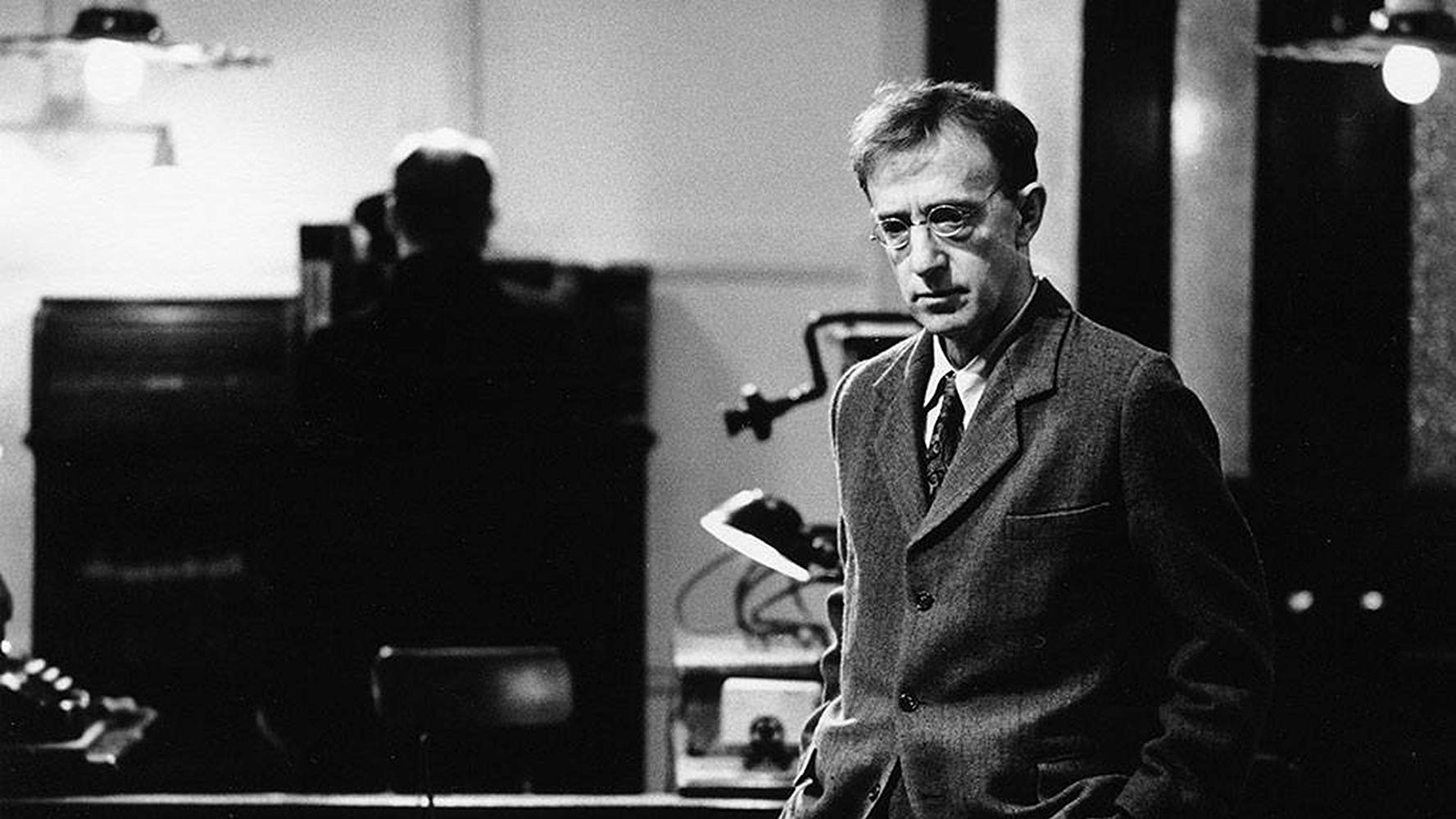Woody Allen’s last film for Orion, ending a relationship that dated back to A Midsummer Night’s Sex Comedy (1982), is the closest that the writer/director ever came to making a horror film, even if it is a very borderline one. A love letter to German Expressionism, it takes the basic plot of Fritz Lang’s M (1931), pours in one of the starriest ensemble casts he ever assembled and tipped in a handful of his trademark snappy, neurotic one-liners.
Set in an unnamed country (it looks like German city of the 1940s but everyone speaks with American accents and the dollar is the currency of choice), it stars Allen as Kleinmann, another of his signature nebbishs, reluctantly co-opted into a vigilante gang searching for the serial strangler that is haunting the perpetually fog-shrouded streets. Elsewhere, circus clown Paul (John Malkovich) argues with his partner Irmy (Mia Farrow) who runs off and winds up at a brothel. Paths cross and Kleinmann narrowly escapes being lynched by the mob who mistake him for the killer before everyone ends up back at the circus.

Based on Allen’s one-act play Death, Shadows and Fog is full of witty asides and blessed with stunning black and white photography from Carlo Di Palma, but it’s nevertheless a surprisingly shapeless film. Allen seemed so in thrall to its spot-on recreation of the German Expressionist look and feel that he lost sight of the plot. Not much more happens than is related above. Unusually for an Allen film of the period the plot is dull and equally surprisingly not all of the jokes work. It’s unquestionably stunning to look at but with no plot to speak of, it’s hard work. The recreation of the German Expressionist look is flawless but ultimately it doesn’t really amount to very much. It’s a fascinating experiment albeit one that doesn’t work.
The cast is the big draw here – as well as Allen, Malkovich and Farrow casts Donald Pleasence, David Ogden Stiers, Madonna, Lily Tomlin, Jodie Foster, Kathy Bates, John Cusack, John C. Reilly, Kate Nelligan, Kurtwood Smith and Fred Gwynne among many others, some of the bigger names in some of the film’s smaller roles. Many of them appear for just a few minutes here and there but their presence adds a layer of interest to the film that it would have lacked without them. The other “star” is the huge 26,000-square-foot set built at the Kaufman Astoria Studios in New York, an extraordinary, sprawling recreation of a faux middle European setting designed by Santo Loquasto.

As you might expect, Allen clearly knows his subject well, quoting from the usual suspects (the aforementioned M, F.W. Murnau’s Nosferatu, eine Symphonie des Grauens (1922)) but also tapping into the seam of influence that was informing many of his other films at the time, perhaps most notably Ingmar Bergman and Federico Fellini whose Gycklarnas afton/Sawdust and Tinsel (1953) and La strada/The Road (1954) are never far away from Shadow and Fog‘s gloomy surface, particularly their evocations of European circus life. Allen had long been a master fantastist (other genre films have included Sleeper (1973), Zelig (1983), The Purple Rose of Cairo (1985), Alice (1990) et al) but the horror aspects of Shadows and Fog are borderline at best and rather too quickly forgotten about. The mad killer narrative fades into the background and is too quickly resolved at the climax. Allen throws in a last minute fantasy touch when two characters literally disappear into thin air just before the end credits begin.
Plot never really played that much a role in Expressionism, the look and feel of the film being far more important than what’s actually going on, so to criticise the slightness of the plot seems a little churlish. But one can’t help but wish that Allen had tried just a little harder and matched his flawless visual recreation of the Expressionist style with a more engaging and original story.